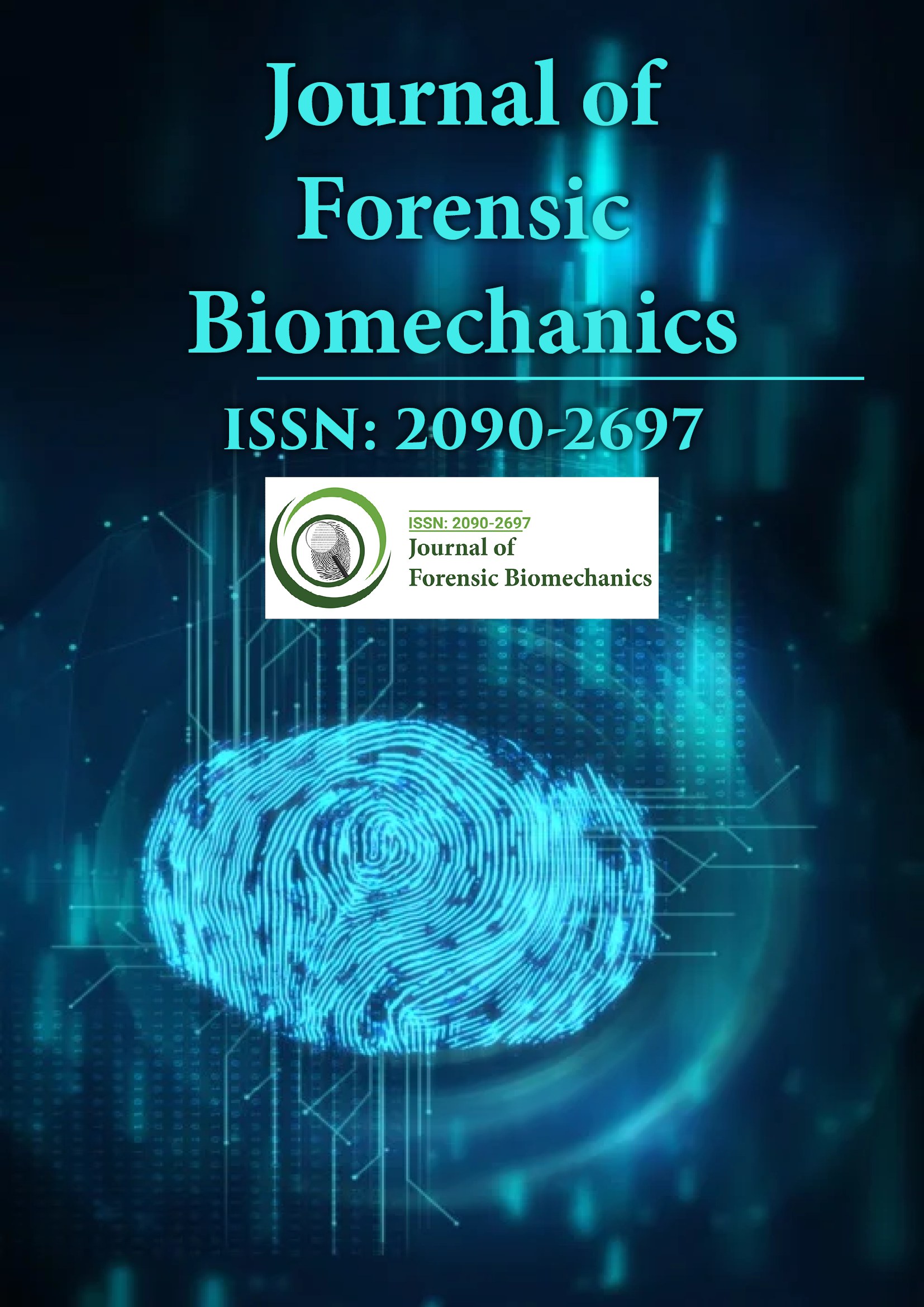Indexed In
- Genamics JournalSeek
- SafetyLit
- Ulrich's Periodicals Directory
- RefSeek
- Hamdard University
- EBSCO A-Z
- Geneva Foundation for Medical Education and Research
- Euro Pub
- Google Scholar
Useful Links
Share This Page
Journal Flyer

Open Access Journals
- Agri and Aquaculture
- Biochemistry
- Bioinformatics & Systems Biology
- Business & Management
- Chemistry
- Clinical Sciences
- Engineering
- Food & Nutrition
- General Science
- Genetics & Molecular Biology
- Immunology & Microbiology
- Medical Sciences
- Neuroscience & Psychology
- Nursing & Health Care
- Pharmaceutical Sciences
Opinion Article - (2025) Volume 16, Issue 1
Human Motion and Crime Scene Evidence: A Biomechanical Exploration
Christie Smit*Received: 01-Jan-2025, Manuscript No. JFB-25-28538; Editor assigned: 03-Jan-2025, Pre QC No. JFB-25-28538 (PQ); Reviewed: 17-Jan-2025, QC No. JFB-25-28538; Revised: 24-Jan-2025, Manuscript No. JFB-25-28538 (R); Published: 31-Jan-2025, DOI: 10.35248/2090-2697.25.16.518
Description
Biomechanics, the study of forces and their effects on living organisms, plays a pivotal role in forensic science, particularly in crime scene analysis. By examining human motion and the mechanical aspects of injuries, forensic experts can reconstruct events, determine the plausibility of witness statements, and establish critical details about criminal incidents. Understanding human motion is fundamental in forensic biomechanics. This involves analyzing both kinematics the study of motion without considering forces and kinetics, which focuses on the forces causing motion. In the context of crime scenes, such analyses help interpret evidence related to injuries, falls, and violent encounters. For instance, the trajectory of a fall can indicate whether it was accidental or the result of foul play. Similarly, the nature and extent of injuries can reveal the amount of force applied and the position of the victim during an assault.
Biomechanical principles also assist in evaluating the plausibility of witness testimonies. For instance, if a suspect claims selfdefense, stating that the victim fell onto a weapon, biomechanical analysis can assess whether the injuries align with such a scenario. By reconstructing the events leading to the injury, experts can determine if the physical evidence supports or contradicts the statements provided. In cases involving falls from heights, biomechanics aids in determining the cause and manner of death. By analyzing factors such as the height of the fall, body position upon impact, and the resulting injury patterns, forensic experts can differentiate between accidental falls, suicides, and homicides. For example, the distribution of injuries in a controlled fall differs significantly from those sustained in an uncontrolled or assisted fall, providing insights into the circumstances surrounding the incident.
The integration of technology has significantly advanced the field of forensic biomechanics. Motion capture systems, commonly used in sports science and animation, are now employed to recreate and analyze human movements in forensic contexts. These systems track the motion of individuals to create detailed models that can simulate various scenarios, such as assaults or accidents. Such simulations provide visual and quantitative data that enhance the understanding of complex cases.
High-speed video analysis is another technological advancement utilized in forensic biomechanics. By capturing rapid movements that are imperceptible to the naked eye, investigators can analyze events like shootings or vehicular accidents with greater precision. This detailed examination allows for accurate reconstructions, aiding in determining factors like the sequence of events, timing, and the actions of individuals involved. Despite its benefits, the application of biomechanics in forensic science faces challenges. Human movement is inherently variable, influenced by numerous factors such as age, health, and environment. This variability necessitates careful consideration when drawing conclusions from biomechanical analyses. Moreover, the interpretation of biomechanical data requires specialized expertise to ensure accuracy and reliability.
In conclusion, biomechanics offers invaluable insights into human motion and injury mechanisms, significantly enhancing crime scene analysis. Through the application of biomechanical principles, forensic experts can reconstruct events with greater accuracy, assess the credibility of testimonies, and uncover details that might otherwise remain obscured. As technology continues to evolve, the integration of advanced tools will further refine these analyses, strengthening the role of biomechanics in the pursuit of justicsse.
Citation: Smit C (2025). Human Motion and Crime Scene Evidence: A Biomechanical Exploration. J Forensic Biomech. 16:518.
Copyright: © 2025 Smit C. This is an open-access article distributed under the terms of the Creative Commons Attribution License, which permits unrestricted use, distribution reproduction in any medium, provided the original author and source are credited

